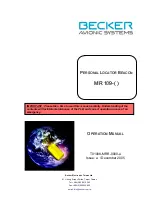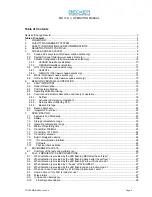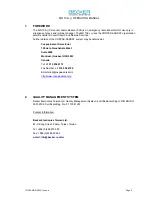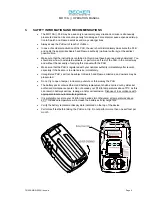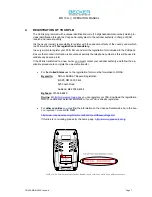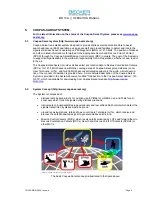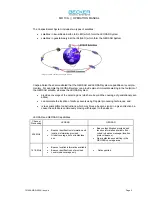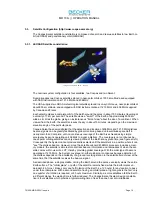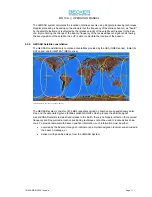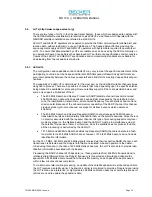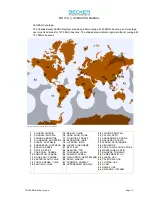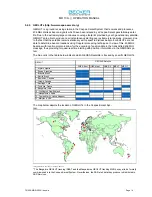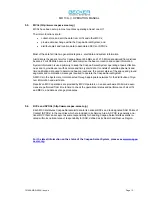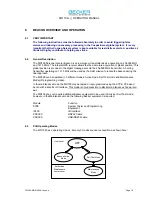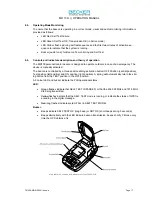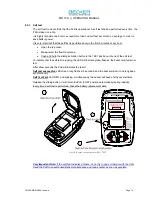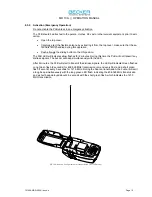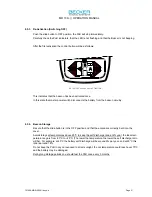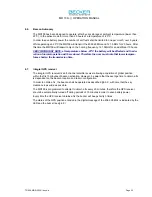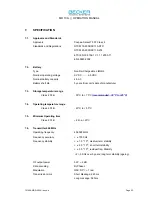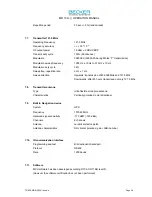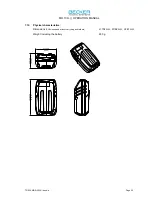
MR 109–( ) OPERATION MANUAL
T01008-MRR-0000
/
Issue:
a
Page
10
5.3.
Satellite Configuration (http://www.cospas-sarsat.org)
The Cospas-Sarsat satellite constellation is composed of search and rescue satellites in low Earth or-
bit (LEOSAR) and geostationary orbit (GEOSAR).
5.3.1. LEOSAR Satellite constellation
Image copyright CNES, M. Ducros
The nominal system configuration is four satellites, two Cospas and two Sarsat.
Russia supplies two Cospas satellites placed in near-polar orbits at 1000 km altitude and equipped
with SAR instrumentation at 121.5 MHz and 406 MHz.
The USA supplies two NOAA meteorological satellites placed in sun-synchronous, near-polar orbits at
about 850 km altitude, and equipped with SAR instrumentation at 121.5 MHz and 406 MHz supplied
by Canada and France.
Each satellite makes a complete orbit of the Earth around the poles in about 100 minutes, travelling at
a velocity of 7 km per second. The satellite views a "swath" of the Earth of approximately 6000 km
wide as it circles the globe, giving an instantaneous "field of view" about the size of a continent. When
viewed from the Earth, the satellite crosses the sky in about 15 minutes, depending on the maximum
elevation angle of the particular pass.
Cospas-Sarsat has demonstrated that the detection and location of 406 MHz and 121.5 MHz distress
beacon signals can be greatly facilitated by global monitoring based on low-altitude spacecraft in
near-polar orbits. Complete, yet non continuous coverage of the Earth is achieved using simple
emergency beacons operating on 406 MHz to signal a distress. The coverage is not continuous be-
cause polar orbiting satellites can only view a portion of the Earth at any given time (see figure at left).
Consequently the System cannot produce distress alerts until the satellite is in a position where it can
"see" the distress beacon. However, since the satellite onboard 406 MHz processor includes a mem-
ory module, the satellite is able to store distress beacon information and rebroadcast it when the sat-
ellite comes within view of a LUT, thereby providing global coverage. With the older type of beacons
operating at 121.5 MHz, the System coverage is neither global nor continuous because detection of
the distress depends on the availability of a ground receiving station in the satellite field of view at the
same time that the satellite receives the beacon signal.
As described above, a single satellite, circling the Earth around the poles, eventually views the entire
Earth surface. The "orbital plane", or path of the satellite, remains fixed, while the Earth rotates un-
derneath it. At most, it takes only one half rotation of the Earth (i.e. 12 hours) for any location to pass
under the orbital plane. With a second satellite, having an orbital plane at right angles to the first, only
one quarter of a rotation is required, or 6 hours maximum. Similarly, as more satellites orbit the Earth
in different planes, the waiting time is further reduced. The Cospas-Sarsat System design constella-
tion is four satellites which provide a typical waiting time of less than one hour at mid-latitudes.

